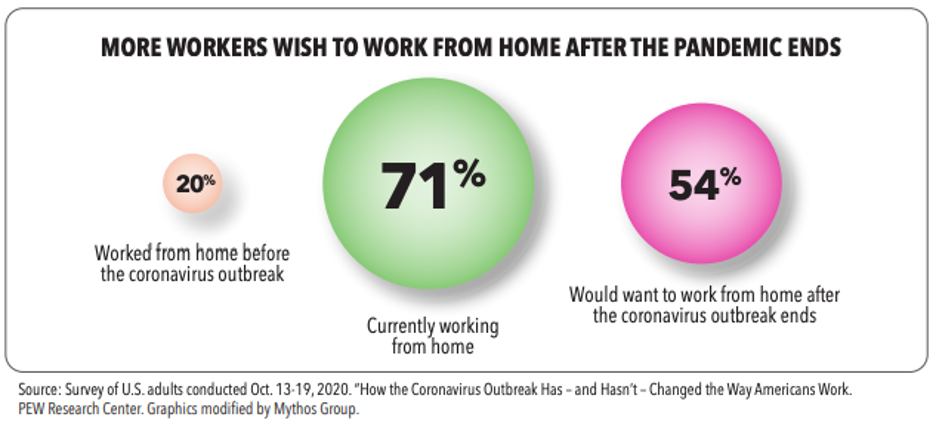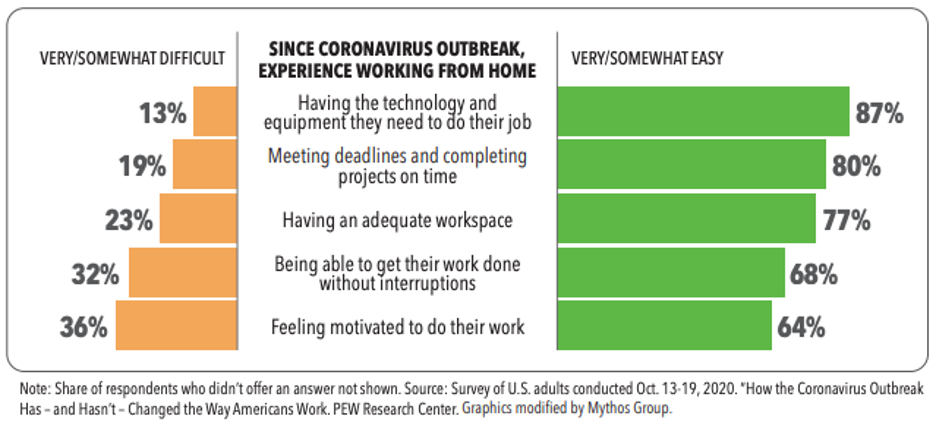Over the past 20 months, the Covid-19 pandemic has created an unprecedented disruption in the global economy. The toll has been felt across all industries and in businesses of all sizes. As organizations attempt to resume some semblance of normalcy, one of the biggest challenges they face is historically high levels of employee attrition.
This mass exodus of people from the workforce has been dubbed The Great Resignation and the numbers are staggering. According to the U.S. Bureau of Labor Statistics, almost 20 million people quit their jobs in 2021 during the months of April through August. In August alone, 4.27 million employees resigned – that’s 2.9% of the entire American workforce in one month.

In addition to the employees who have already quit, a poll conducted by Gallup showed that 48% of workers who were still employed were actively searching for new jobs. Even without these labor statistics, proof of this phenomenon can be seen in the “Help Wanted” and “Now Hiring” signs decorating the windows of many businesses. Perhaps you’ve even struggled to staff your own business to full capacity this year.
To understand what’s happening, it’s necessary to dig a little deeper into the ways in which the global coronavirus pandemic has affected the average American worker. While the trends are reflected in different groups in different ways, they can all be traced back to the physical, economic and mental tolls of Covid-19. For better or for worse, this virus has fundamentally changed the way people work, and the changes, so far, appear to be enduring.
To Coin A Phrase
Anthony Klotz, an associate professor of management at Texas A&M University, is credited for coining the phrase The Great Resignation to describe the sizable number of employees quitting en masse. While there are likely almost as many reasons for people quitting as there are people who have quit, Klotz argues that there are four main trends responsible for the majority of workers who are choosing to leave their jobs.
In a Washington Post Live webcast, Klotz describes these four trends as:
- A Backlog of Resignations
- Worker Burnout
- Pandemic Epiphanies
- The Desire to Continue Working Remotely
Let’s take a closer look at these trends.
A Backlog Of Resignations
As Klotz noted, many of the resignations come from people who had wanted to leave their jobs prior to the pandemic but decided to hold onto them for a little longer because of economic uncertainty. Many of these workers were initially concerned that they wouldn’t be able to find another job if they quit. As the pandemic dragged on, stimulus money softened some of the economic blows, and after the vaccine was introduced, many who had been waiting to take the leap to another job finally leapt.
Now within this cohort of resignees, there are also some trends emerging. The first subgroup in this category consists of those who were unhappy with their work situation in some way and wished to make a change in order to get better pay, better benefits or a better work environment. According to the Harvard Business Review, employees between the ages of 35 and 45 years old have had the greatest rates of resignation. These mid-level employees are looking toward the second half of their careers and they not only want to maximize their income, but they also want to work at a job that they enjoy.
Other workers in this group are slightly older. Yes, we’re talking about those Baby Boomers. Colloquially known as Boomers, this generation was born between 1946 and 1964 and is currently between the ages of 57 and 75 years old. Many of these older workers were ready to retire anyway. Others may have been a few years out from retirement, but because of the lengthy bull market, they decided that their investments were enough to allow them to retire a few years early.
Worker Burnout
All of the workers in the previous subset were likely to leave their current jobs at some point, but it’s clear that the pandemic affected the timing of their move. For the next group, their decision to quit was more directly affected by Covid-19. While burnout has always been a common reason for people to leave their jobs, there are some industries where the rates of burnout have skyrocketed due to novel stressors that have emerged over the last year and a half.
According to the U.S. Bureau of Labor Statistics, industries like Education and Health Services, Leisure and Hospitality, Accommodation and Food Services, Retail Trade, and Trade Transportation and Utilities have seen the most resignations this year.
While we’ve all heard the stories of doctors and nurses, stretched to the breaking point from relentless waves of Covid-19 infections and deaths, industries that are not so visible are having workers shoulder increasing burdens during this time as well. For instance, we don’t hear nearly as many stories from those running rural utilities like water and wastewater systems, but many utilities across the nation were stretched for resources before the pandemic hit. The conditions for workers who supply these basic necessities have since become unbearable.
The sources of our stress are innumerable and may include lack of childcare, lost wages, caring for sick relatives, deaths of loved ones, medical bills and fear of interacting with the public, just to name a handful. We’re all experiencing varying levels of stress from the pandemic, which has diminished our capacity to handle additional stress at our jobs. For a growing number of employees, the stress is just simply too much for them to handle.
Pandemic Epiphanies
Covid-19 changed everything. It has caused a once-in-a-lifetime upheaval of almost every single aspect of our lives. As a society, we could not have possibly guessed how such a seismic shift would have affected our attitudes, our outlooks, our lives and our livelihoods. As a whole, we have reevaluated what’s important in life. Many people have been given a painful reminder that life is short, and they’ve decided to be more intentional about how they spend their time.
Some aspects of work that employees are finding unacceptable include bullying, racism, unequal pay, unfair bosses, long commutes, inflexible hours, travel requirements, inability to progress inside an organization, stagnant pay, not feeling valued, having no work/life balance, toxic office politics and being at odds with your employer’s values or corporate culture.
In the book, “The Top Five Regrets of the Dying,” palliative care nurse Bonnie Ware talks about the common themes that she heard from her dying patients. In an interview about the book, Ware explained that these are the top 5 regrets people most often have at the end of their lives:
- I wish I’d had the courage to live a life true to myself, not the life others expected of me.
- I wish I hadn’t worked so hard.
- I wish I’d had the courage to express my feelings.
- I wish I had stayed in touch with my friends.
- I wish I had let myself be happier.
Covid-19 has been a brutal reminder of our mortality, but as a silver lining, the disease has given us the occasion to look death in the face and the opportunity to come to some of these transformational realizations while we still have time left to live our lives in a way that avoids these regrets.
The Desire to Continue Working Remotely
The last reason that Klotz gives for The Great Resignation is the reluctance of many workers to go back into the office. While some people couldn’t wait to leave their spouses and kids and trade in their kitchen tables for desks, the vast majority of workers who moved away from their offices during the pandemic have wanted to stay away.
A study by Pew Research Center9 shows that the number of Americans working from home has increased 51% during the pandemic. Of those workers who are currently working remotely, 54% wish to continue working from home after the pandemic ends. That would be a significant increase in the remote workforce from pre-pandemic levels.

In the past, you may have been guilty of giving someone the side-eye when they said they were working from home. Most remote workers were often met with dubiousness that they were actually “working” when they were offsite. But to the surprise of many, we found ourselves to be incredibly productive when we were forced out of our cubicles and into a home office.
Remote workers suddenly weren’t distracted by co-workers. They didn’t sit for hours in useless meetings. And, what’s even better, they managed to get the job done as well or better than they did before. In addition, many people were able to spend more time with their kids, more time with their pets and less time trapped in their cars on lengthy commutes.
The graphic below says it all. According to the same Pew Research Center survey, most of the employees that have worked remotely during the pandemic find that working from home is simply easier.

With 10.9 million job openings as of September 8th of this year, workers are increasingly feeling confident that if their employer won’t let them work from home, they have a good chance of finding one who will.
What’s Next?
In our next blog post, we’ll look at some of the ways employers can combat The Great Resignation. The employees who are leaving these jobs are vocal about the reasons they’ve chosen to quit. If organizations listen closely to their feedback, they’ll find a clear roadmap to retaining employees and attracting new talent during this highly mobile and transitory labor market. While these emerging employment trends are quite interesting, the organizational opportunities they present are truly exciting!







